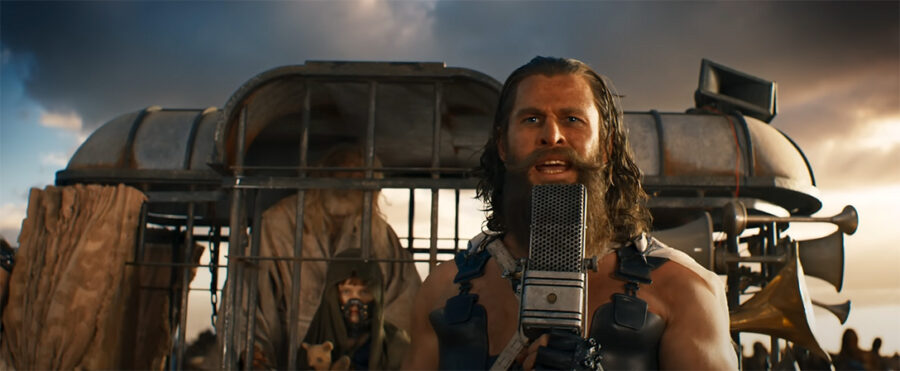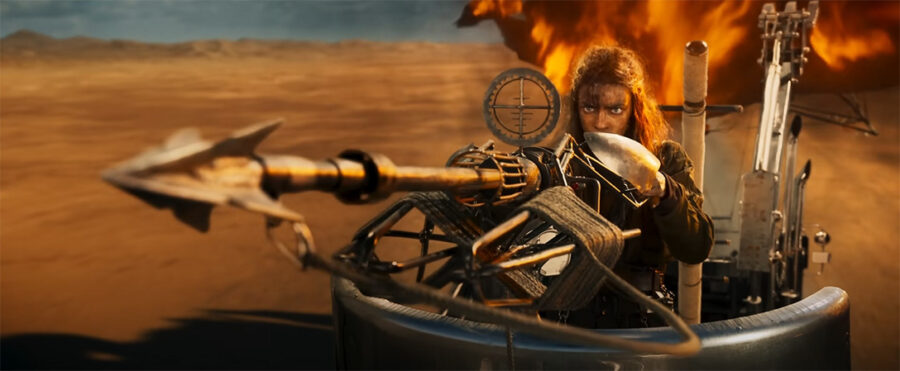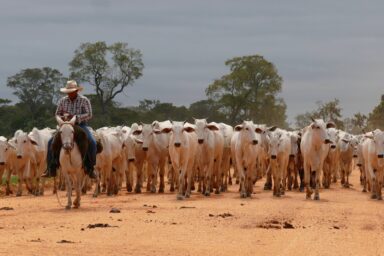There will still be Mondays after doomsday.
|
Listen To This Story
|
There is a genre called climate fiction that tells stories of the world as impacted by climate change. These books tend to be speculative fiction (hence the moniker “cli-fi”), often about a future Earth scorched or drowned or chastised by talking trees. I am keeping an eye on this whole thing.
Many are the types and kinds of the climate novel that “reveal the people coming together to effect change through action, whose stories aren’t yet told,” as author and climate activist Tori Tsui put it in a recent New Scientist article. Tsui is on the jury of a new literary award, the Climate Fiction Prize, which, when it rolls out for the first time in June at the Hay Festival of Literature & Art in Wales in the United Kingdom, will reward work “as realistic about the climate crisis as it [is] inspiring.”
I’ve been monitoring this genre, as I say, partly with the attitude of someone engaged in the current state of fiction but mostly with the attitude of a child wary of the dinnertime vegetable. This is a bad attitude, and it is mine.
It’s not to say that climate fiction isn’t good; books like Richard Powers’s The Understory and N.K. Jemison’s Broken Earth Trilogy are proper literature… to say nothing of the thousands of environmental catastrophe books and movies that came around before journalist Dan Bloom coined the term “climate fiction” in 2011. I only wonder if such a genre has the distinct disadvantage of attracting the creators who feel they “have something to say” about the climate crisis, as opposed to those who, very reasonably, want to use the “new normal” as a backdrop for the story.
Tsui thought this too:
This sort of fiction is precious, especially in a world already characterized by seemingly endless chaos and disaster and filled with doomsday-esque rhetoric and projections for the future. I have even fallen prey to these tropes in my own writing, which I know can be a disservice to what we need in times of change. Given this, as readers, we might believe that examples of measured climate fiction are few and far between.
Climate fiction is often “somber” or “grim” or “elegiac,” but the genre wouldn’t seem to have room for “rollicking.” So where does Furiosa: a Mad Max Saga fit in? Director George Miller’s latest tells the backstory of Furiosa, the surprise heroine from 2015’s Mad Max: Fury Road.

Amid leather codpieces and the endless quest for precious “gozzoline,” one might be forgiven for missing the fact that Miller has been practically an Aesop of climate fiction since 1979’s Mad Max. Resource depletion, war, environmental collapse: These are all the backdrop for Miller’s 45-year obsession with how to survive after the world we know is over.
In the latest, a young Furiosa (Alyla Browne) is plucked by a biker gang from an Edenic paradise ruled by warrior women called “the Green Place,” just as she is herself plucking a fruit from a tree. (She hides the pit in her hair through the subsequent angry years; the film’s denouement reveals where it is finally planted — an amazing bit of mythic symbolism.)
She’s raised by the bombastic leader of the gang, Lord Dementus (Chris Hemsworth), as the marauders commit excesses all across the wasteland. By and by, Furiosa ends up ensconced in the Citadel, a few towers of rock with a water supply ruled over by the cartoonishly vile Immortan Joe and his brood. (Names include Rictus Erectus and Scabrous Scrotus.) There, she hides her identity and grows into young adulthood (now played by Anya Taylor-Joy), learning the ways of the auto-shop mechanic.
The rest of the story concerns the difficulties of trade negotiations in the Wasteland, with negotiations among the Citadel, the Bullet Farm, and Gastown all more or less breaking down as Furiosa seeks revenge on Dementus and tries to get back to the Green Place.
Which is all maniacally, deliriously fun to watch. And, Scrotus aside, true-to-life. In 2019, researchers found a connection between destructive storms and the rise of authoritarianism in island countries. Study author Professor Mehmet Ulubasoglu said that, based on his research, “we believe that in the wake of disasters, like storms, the government provides their citizens with postdisaster palliative relief, such as aid or financial assistance, and in this window of opportunity, they are more able to take steps towards a more autocratic or authoritarian regime.”
This is the “ecofascism” of Immortan Joe, who uses access to water and food to keep the denizens of the Citadel under control. Miller isn’t overt about any of this; it’s the kind of subtext that whispers under roaring engines.

But even among its fans, like Wired’s John Semley, the exhilaration of Miller’s movies can be seen as just another way capitalism corrupts the narrative:
Denizens of the desolate wastelands exalt automobiles, motorbikes, engines, and especially, gasoline as fetish objects. But at the same time, the films’ pleasures are guilty of this same exaltation. The thrills derive from high-octane racing, dangerous automobile maneuvers, body-mangling crashes, and the whole vroom-vroom of it all. They’re like war movies that ask us to thrill at the violence and daring of combat, all the while muttering, “This is actually really awful, you know.” There is no effort to reconceive a world doomed by its pathological obsession with machines chugging on crude oil. Rather, the apocalyptic backdrop only furnishes fantasies of further decline.
I tend to agree that commercial art’s message can be distorted by its medium, whether it’s about war or climate change. But what might feel like a bug in Miller’s films is a feature. Consider: For all the outlandishness of this outland, it’s a world in which people deal with it: deal with their circumstances. The fact that Furiosa is totally bananas only highlights how everyone treats this barbaric and ceremonial life as quotidian; a road battle with exploding cars and flamethrowers is just more of the same. That is an honest parable for the climate crisis.
It also may be the best way to reach an audience. Matthew Schneider-Mayerson, an associate professor of Environmental Studies at Yale-NUS College, wrote three studies on “the influence of climate fiction on real-world readers,” and his conclusions are nuanced and enlightening. (His essay is well worth a read.) Relevant here, though:
I found that climate fiction is unlikely to reach most climate deniers or skeptics because they’ll never pick up these books. … As such, it seems unlikely that these works would function as Trojan horses for message-smuggling, as some of us might hope. It’s more likely that fiction that doesn’t advertise itself as related to “nature,” “the environment,” or “climate change” will reach an audience that isn’t already interested in these topics. To have a maximum impact on readers who would otherwise not be thinking about climate change, climate narratives should not market themselves as such.
Are Furiosa and the rest of the Mad Max films the truly revolutionary approach to climate fiction? I don’t know whether it’s a game-changing cautionary tale. I like that it has reflected my experience of the world as a place with no apparent upper limit on absurdity.
Because even if life is ending, it still just goes on and on. There are still Mondays after doomsday. The most well-regarded cli-fi approaches the imagined horrors of tomorrow as something people will deal with, for good and ill. The author Kim Stanley Robinson returns to the theme of a liveable future in novels like The Ministry for the Future (which Bill McKibben called “anti-dystopian” and “realist”) and New York 2140, in which the city, flooded by rising sea levels, gets on with it as what the characters call a “SuperVenice.”
Miller, who took on the industrialized food system in his Babe movies and global warming in his Happy Feet films, finds joy exactly in those places other artists and journalists see only despair. And yet by making fun and funny and sweet movies about environmental peril, he doesn’t abdicate our responsibility to see and to deal; it’s up to us to do something about it after we leave the theater.




